If the radiance of a thousand suns were to burst at once into the sky, that would be like the splendor of the mighty one…
…Now I am become Death, the destroyer of worlds.
Those were the words of Robert Oppenheimer in 1945 after Trinity atomic bomb test – the first ever nuclear test. Months later two bombs of the same size (around 20 kilotons) were dropped on the cities of Hiroshima and Nagasaki with devastating effect.
Over the next twenty years a number of nations would carry out nuclear test around the globe using a variety of methods and nuclear yields. Explosions ranged in size from those less than a kiloton right up to Russia’s massive 50 megaton Tsar Bomba in 1961. That’s 2,500 times more powerful than the Hiroshima bomb.
Most of the nuclear explosions below were carried out by the USA at the height of the Cold War. They were predominantly performed in the deserts of Nevada and New Mexico and on the mid Pacific atolls of the Marshall Islands. The UK and France also tested nuclear weapons in the Pacific.
The images of nuclear explosions below represent the most awesome, terrifying and strangely beautiful I came across.
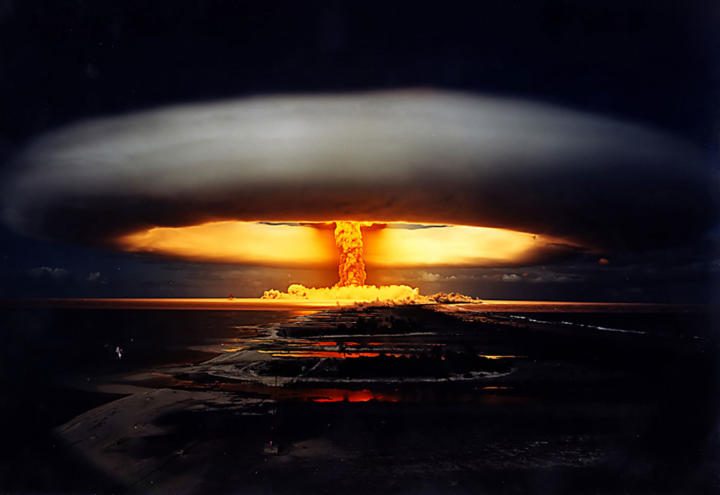
Incredible, apocalyptic photo of the French nuclear test carried out on Fangataufa atoll on July 3rd 1970. This explosion yielded 914 kilotons.
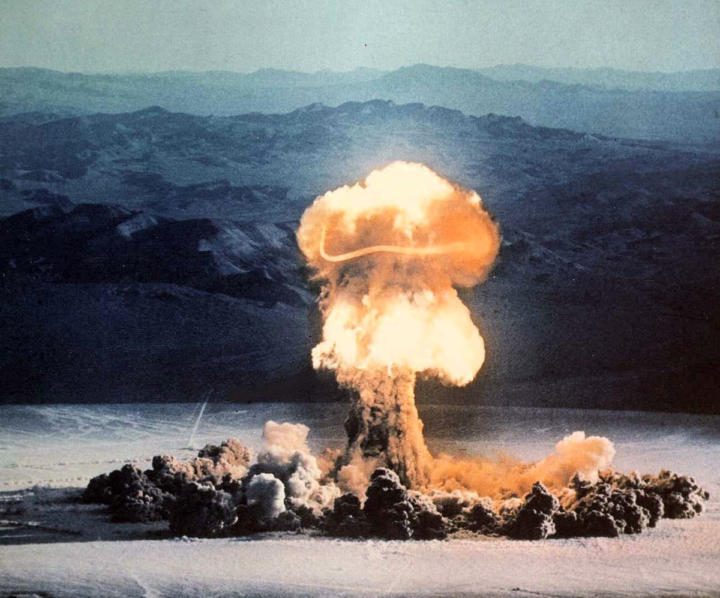
One of many tests as part of Operation PlumbBob in the Nevada desert. This device was named Priscilla (Queen of the desert?!). Priscilla yielded 37 kilotons.
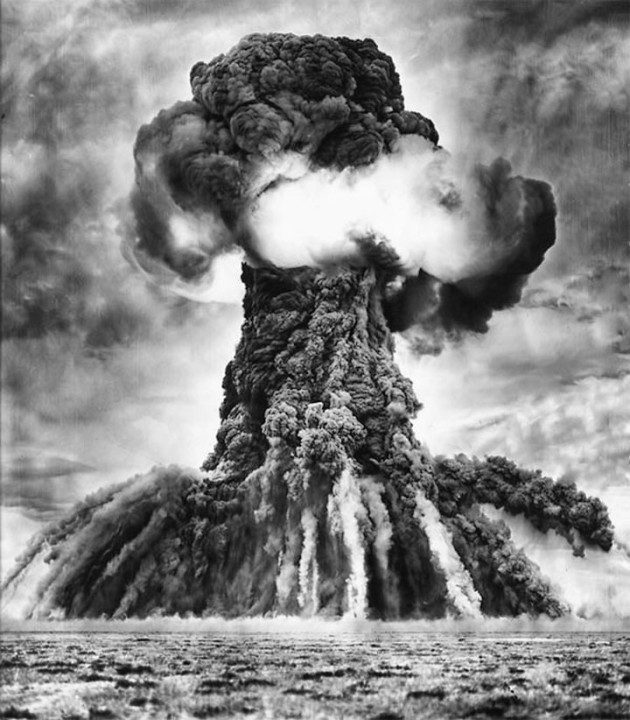
The 1965 Chagan nuclear explosion was part of Russia’s Nuclear Explosions for the National Economy program. The idea was to use nuclear explosions for peaceful civil engineering projects. The 140 kiloton explosion created a 100 meters (328 ft) deep lake and dammed a nearby river.
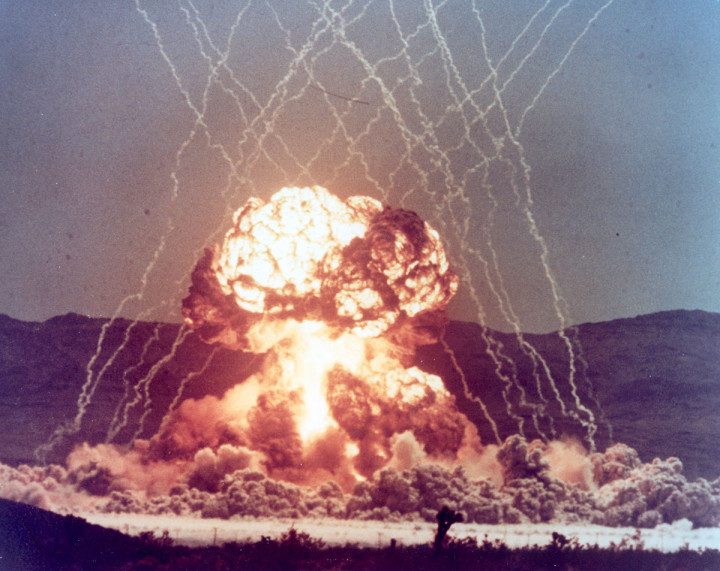
The cosily named Operation Teapot was a series of 14 desert based tests. The explosion above was the MET test which was detonated on a tower and yielded 22 kilotons.
The streaks of smoke that are visible are actually trails from flares that are used to observe the blast

Operation Castle involved 7 high-yield thermonuclear devices. The iconic mushroom cloud from Romeo was created from a huge 4 megaton yield. This image has come to epitomise nuclear explosions and weapons.
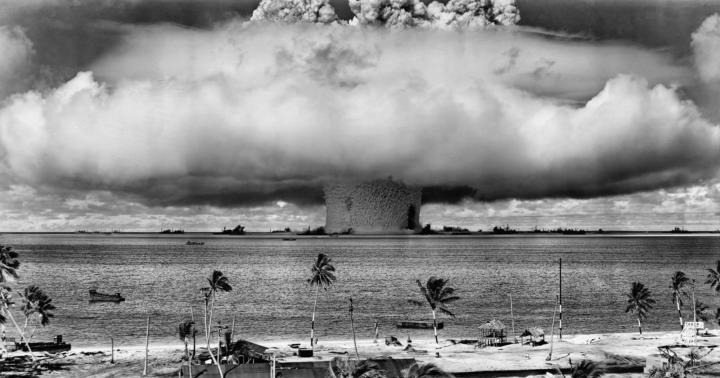
The “Baker” explosion above was part of Operation Crossroads and was the first underwater nuclear weapons test. Considering this photo was taken back in 1946 the quality is exceptional. You can clearly see the massive amount of water forced upward and the fleet of ships anchored around the site. There were 95 ships used to test the effects of this 23 kiloton explosion. Ships as far away as 760 metres (1/2 mile) were sunk and some 2.3km (1.5 miles) away were seriously damaged.
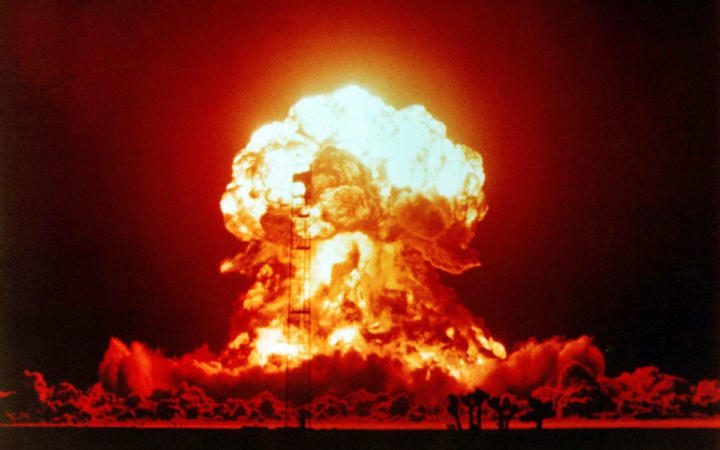
Massive fireball created by the “Badger” 23 kiloton device that was exploded on a tower as part of Operation Upshot-Knothole.
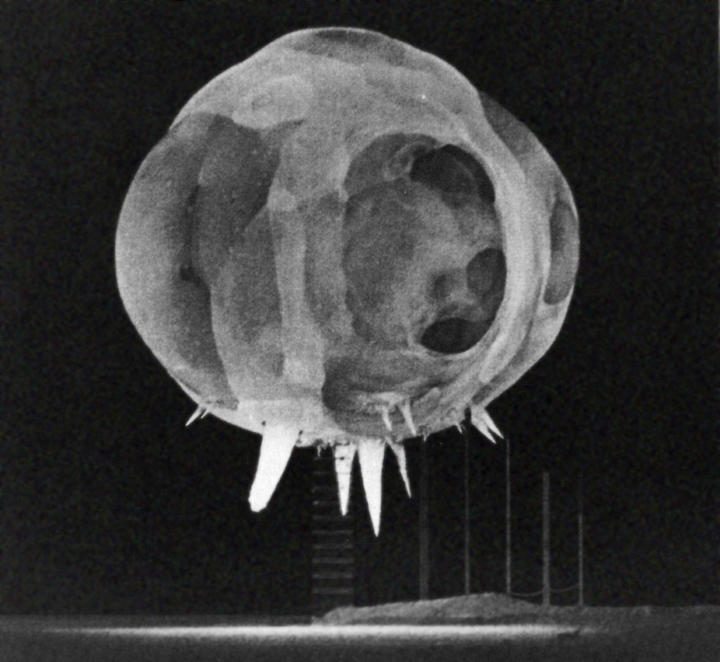
This photograph was taken a matter of milliseconds after detonation of a nuclear device during Operation Tumbler-Snapper. The image was captured using specialised Rapatronic cameras with an exposure time of three millionths of a second. It shows the fireball, which measures around 20 metres (80ft) across and a “rope tricks” protruding from the bottom. These are actually the ropes holding up the tower being vaporized by the explosion.
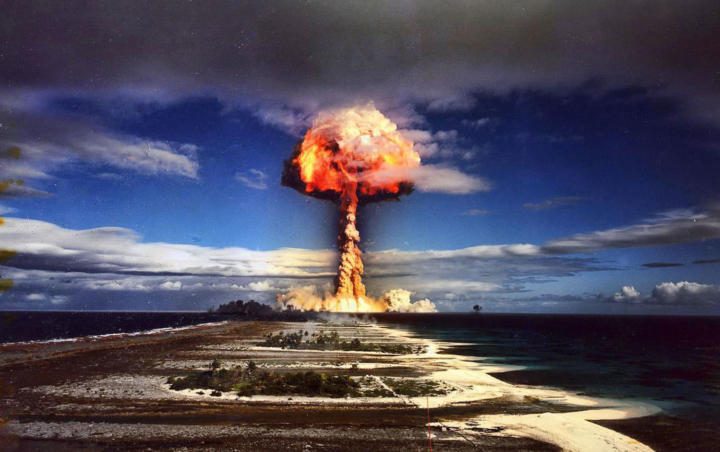
Probably one of the most stunning photos of a nuclear explosion is this one from the Licorne nuclear tests on Fangataufa atoll in French Polynesia. I particularly like the contrast between the tropical idyll and the thermonuclear death and destruction from this 1 megaton device.
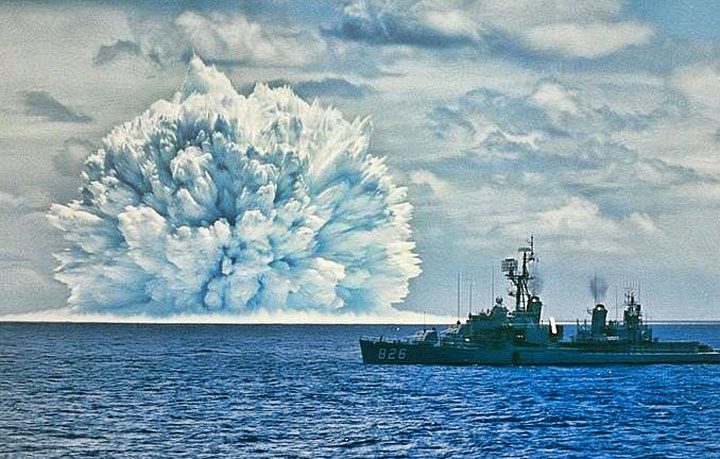
Operation Dominic was a series of 36 nuclear explosions carried out by the US at Christmas Island in 1962. The photo above is of the device named Swordfish, a 20 kiloton warhead on a rocket fired from the USS Agerholm 3 miles away.
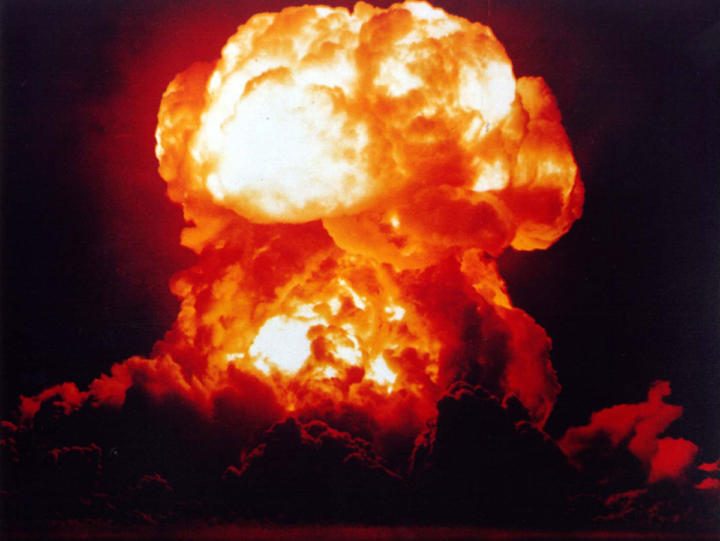
Another explosion from Operation Plumbbob. This device was named “Smoky” and was a 44 kiloton tower-burst. As well as creating this humongous fireball the test also exposed over 3,000 servicemen to high levels of radiation. The whole Operation Plumbbob released dangerous amounts of radiation into the atmosphere.
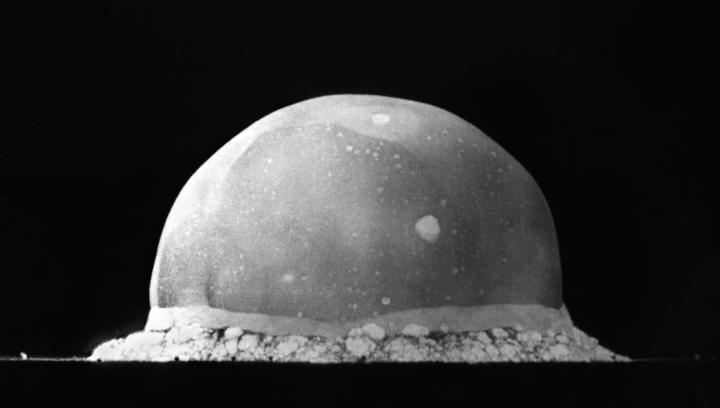
This photograph is so incredibly momentous. It was taken 16 milliseconds after the first nuclear detonation ever. Yes this is around 1/100th of a second past the point of no return and the start of the nuclear arms race.
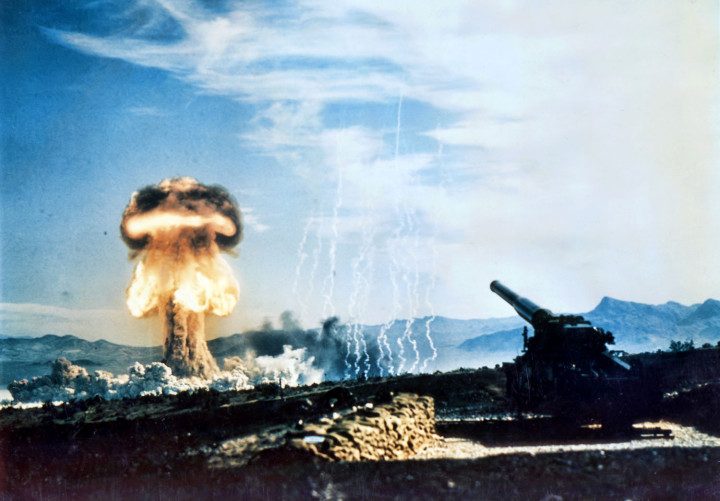
This wonderfully iconic photograph is surprisingly self-explanatory. A shell armed with a 15 kiloton nuclear warhead has just been fired from the cannon in the foreground. This particular piece of nuclear artillery was affectionately known as “Atomic Annie” and this test was named the “Grable shot”.
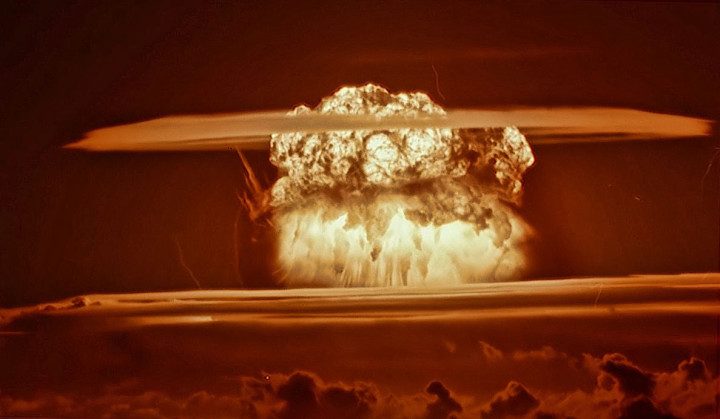
Castle Bravo was the biggest ever nuclear test carried out by the United States. The explosion above was caused by a 15 megaton explosion. This was somewhat of surprise to the boffins carrying it out who only expected a 6 megaton yield. It also resulted in massive fallout which killed some of the crew of a nearby Japanese fishing boat and poisoned several nearby, inhabited islands.
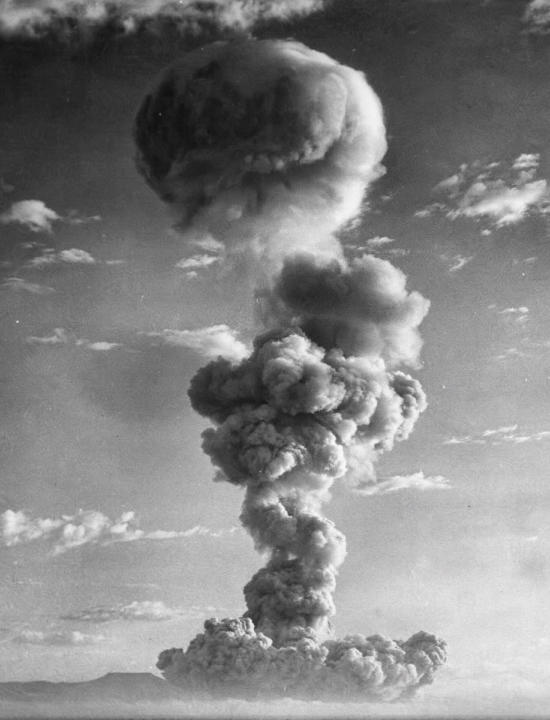
Owens was one of the smaller devices tested as part of Operation Plumbbob. Yielding 9.7 kilotons it still makes a pretty impressive spectacle.
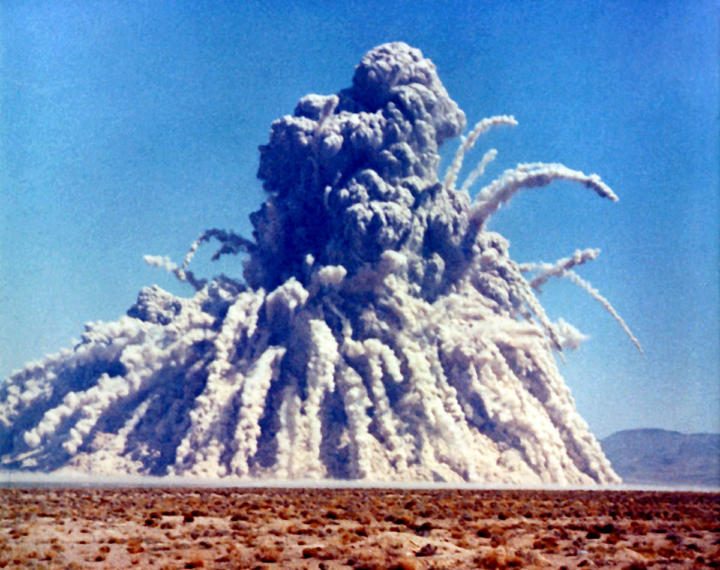
The explosion above was created by a 104 kiloton device buried just under the surface. It was part of Operation Plowshare which was similar to the Russian Nuclear Explosions for the National Economy program. The idea was to use nukes for peacetime projects with ideas such as blasting harbours. For some reason it didn’t catch on…
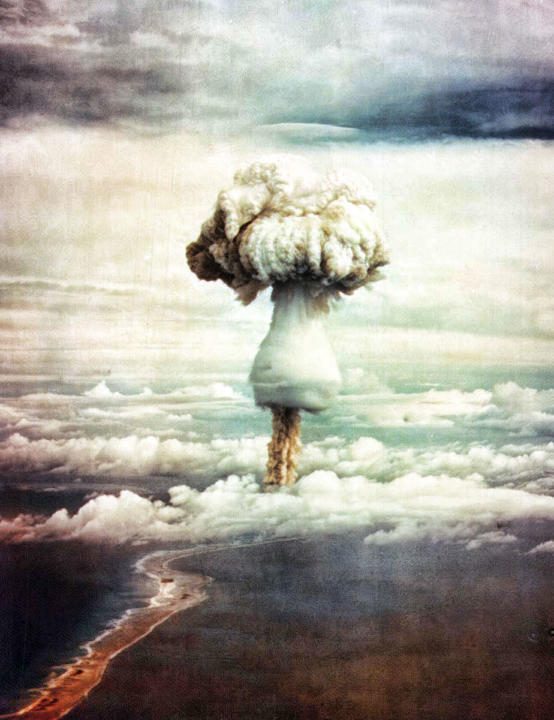
George was the largest device tested in Operation Greenhouse delivering a hefty 225 kilotons of yield. It was also the first test of thermonuclear fission using heavy hydrogen isotopes to boost a standard atomic explosion.
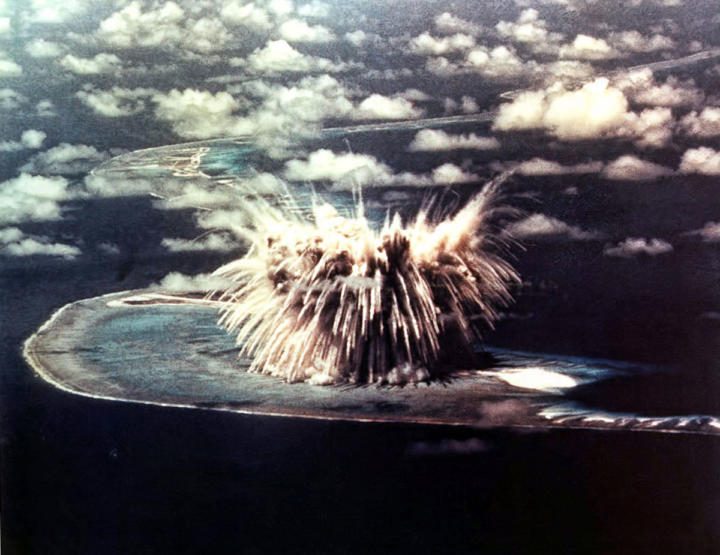
Seminole was a 13.7 kiloton thermonuclear device tested on Enewetak Atoll in the Pacific Proving Grounds. This dramatic looking explosion was the result of submerging the device in a tank of water to simulate an underground explosion.

Another shot of the Castle Romeo plast in which the fireball appears to be transcending into a halo above. This was the third most powerful explosion carried out by the United States ever.
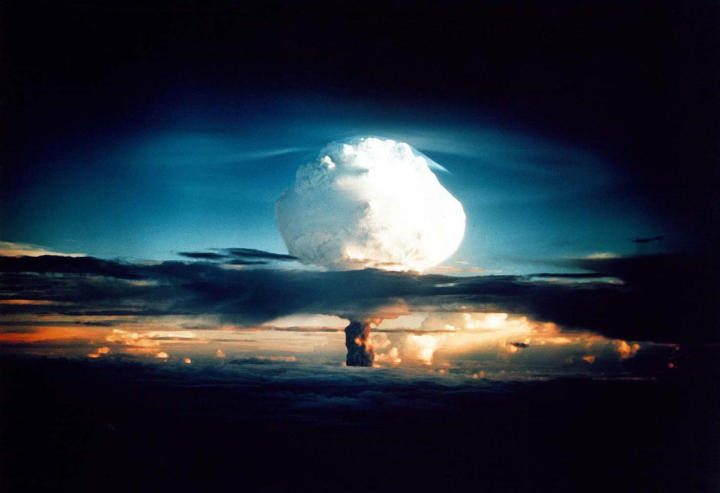
“Mike” was the first hydrogen bomb and one of the two Pacific test making up Operation Ivy. It yielded 10.4 megatons – that’s nearly 500 times the power of the bomb dropped on Nagasaki. The resulting blast made a crater over a mile (1.9km) across, completely obliterating the island it was tested on.
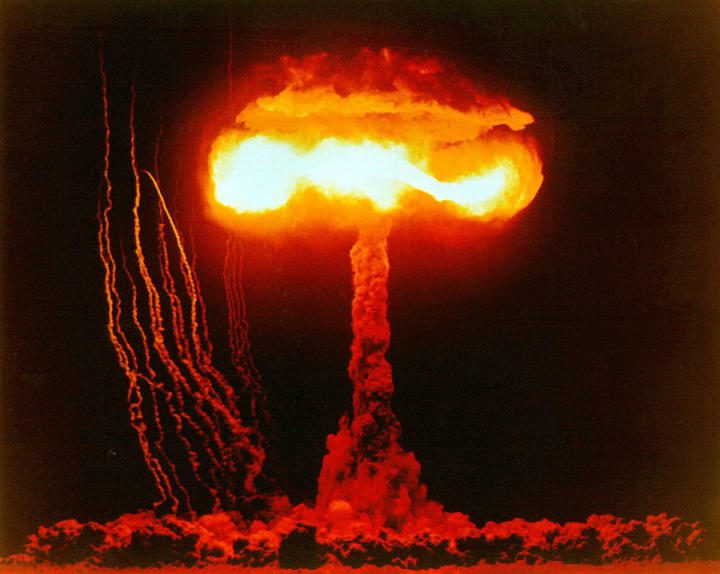
The aptly named Climax was the final and most powerful device tested in Operation Upshot-Knothole. At 61 kilotons it was a fraction of the power of the devices being tested in the Pacific. It still put on a pretty good show though with this archetypal nuclear mushroom.
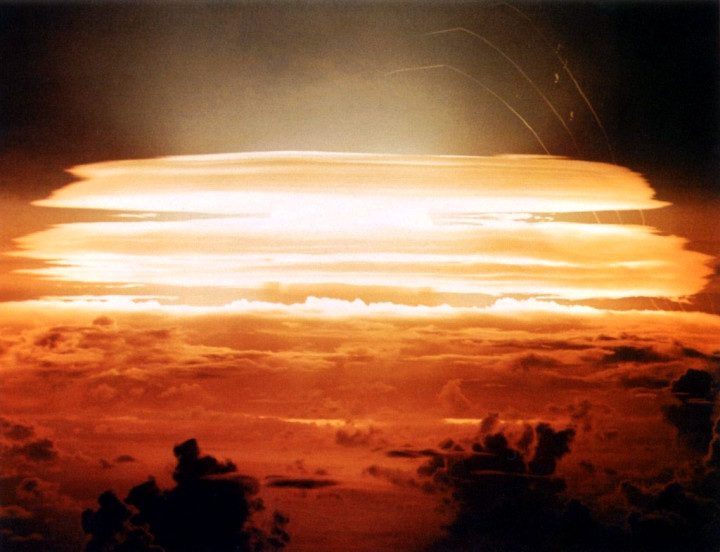
Cherokee was the first US airdrop of a thermonuclear device and it was a big ‘un. Yielding 3.8 megatons it was actually dropped 4 miles (6km) off target.
Here we see the explosion decimating the various cloud layers as the shockwave spreads out from the fireball.
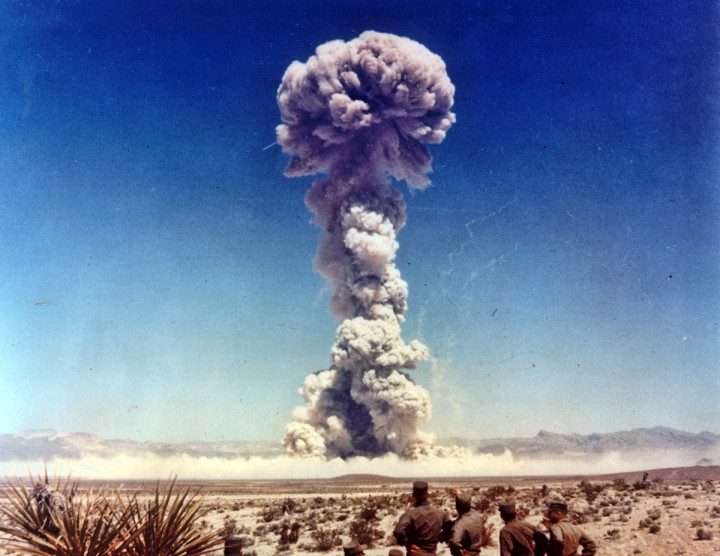
“Dog” was dropped from a Boeing Superfortress onto the desert in Nevada. Yielding 21 kilotons, it was about the same power as those used in World War II. Fortunately the targeting was a little better than in the previous photo otherwise these guys would have been toast!
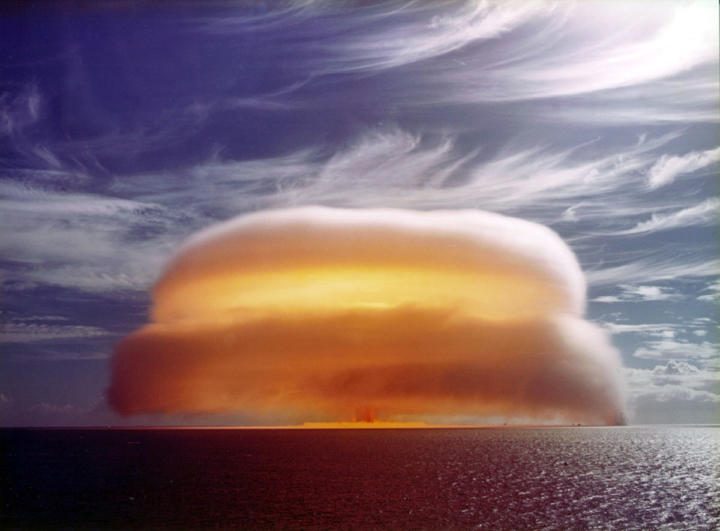
This French 2.6 megaton hydrogen bomb was detonated whilst suspended from a hydrogen balloon 1,800 feet (600 m) above the island of Fangataufa. Apparently fallout from this explosion is what created Godzilla.

Ivy King was the largest fission nuclear bomb ever tested by the US. The 500 kiloton device differed to other, more powerful devices tested in that it was ready to go and could have been used as part of the USA’s nuclear arsenal. Dropped from a Convair B-36 “Peacemaker” the mushroom cloud reached 11 miles (18km) into the sky.
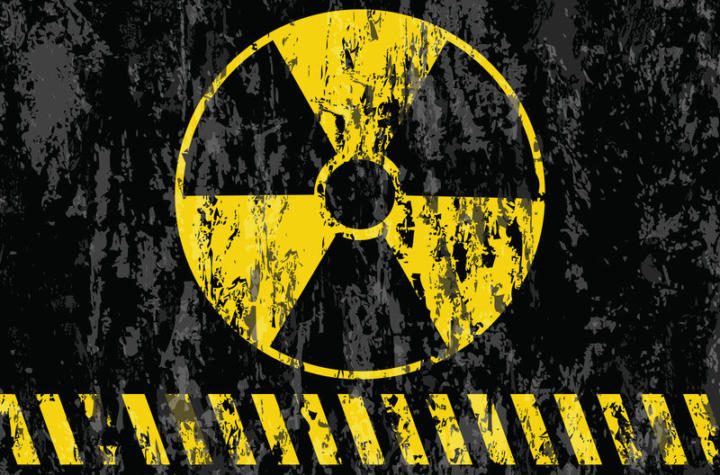
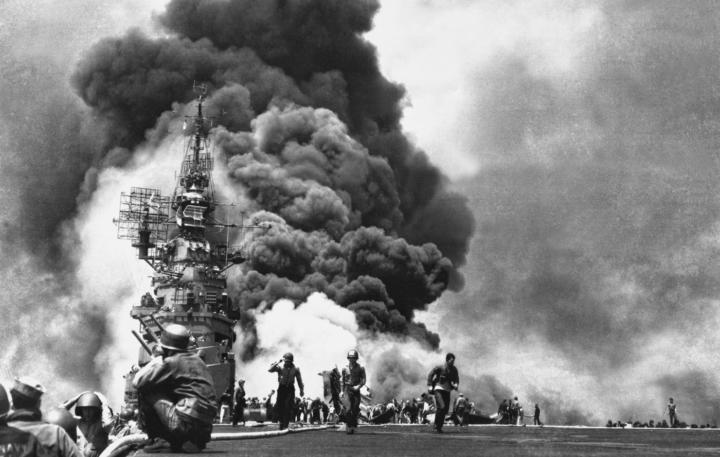
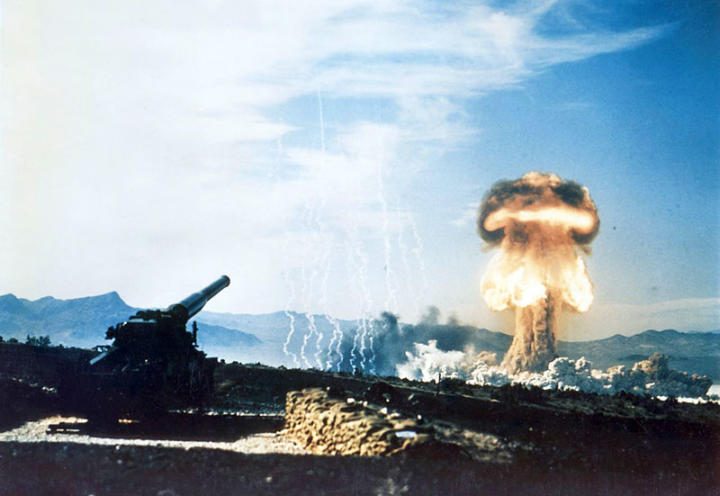
Fantastic photos and excellently described. Just a couple of corrections if I may: In the photo of “Cherokee”. You have printed “Of” target as opposed to the correct word of “OFF” target. It was actually the Castle “Bravo” detonation that inspired Godzilla. Hope that’s helpful. Love the pics. Please keep them coming. Best regards from England.
In 1962 I watched the sedan shot from area 12. About 16 miles from ground O. Your imagination can not even gather it all in. When you see the amount of dirty it pushed up before it broke thru suggests that man needs to never again threaten to use it for war. keep your fingers crossed. The U S needs to stay way ahead of the race. We need not complain about our tax money being spent on this race. look at who are a threat even today.
I like the images but I think no more nuclear weapons should be used ever again
how can we call ourselves “homosapiens” with these weapons and endless wars???
These weapons helped us win the war, catch up on your history bud.
Read the story on the NPR news website about five army officials who actually stood at ground zero under the detonation of a 2 kiloton atom bomb at 18000 feet. They don’t make ’em like that anymore!
5 officers and the camera man. All got cancer except camera guy.
thank you for posting these photos. if anyone sees these and thinks that nuclear weapons are acceptable then they should be put away.
Awesome!